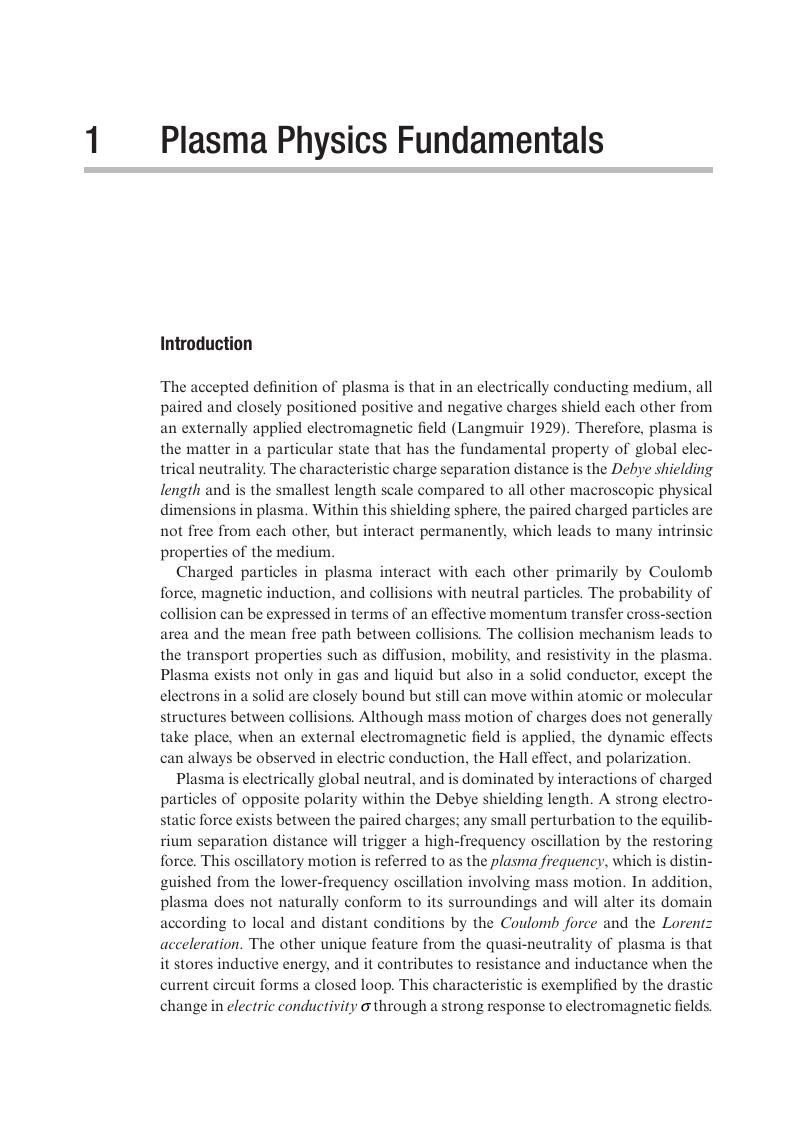Book contents
- Plasma Dynamics for Aerospace Engineering
- Cambridge Aerospace Series
- Plasma Dynamics for Aerospace Engineering
- Copyright page
- Contents
- Preface
- 1 Plasma Physics Fundamentals
- 2 Plasma in a Magnetic Field
- 3 Maxwell Equations
- 4 Plasma Dynamics Formulation
- 5 Magnetohydrodynamics Equations
- 6 Ionization Processes in Gas
- 7 Plasma and Magnetic Field Generation
- 8 Plasma Diagnostics
- 9 Radiative Energy Transfer
- 10 Applications
- Appendix: Physical Constants and Dimensions
- Index
- References
1 - Plasma Physics Fundamentals
Published online by Cambridge University Press: 20 June 2018
- Plasma Dynamics for Aerospace Engineering
- Cambridge Aerospace Series
- Plasma Dynamics for Aerospace Engineering
- Copyright page
- Contents
- Preface
- 1 Plasma Physics Fundamentals
- 2 Plasma in a Magnetic Field
- 3 Maxwell Equations
- 4 Plasma Dynamics Formulation
- 5 Magnetohydrodynamics Equations
- 6 Ionization Processes in Gas
- 7 Plasma and Magnetic Field Generation
- 8 Plasma Diagnostics
- 9 Radiative Energy Transfer
- 10 Applications
- Appendix: Physical Constants and Dimensions
- Index
- References
Summary

- Type
- Chapter
- Information
- Plasma Dynamics for Aerospace Engineering , pp. 1 - 35Publisher: Cambridge University PressPrint publication year: 2018

